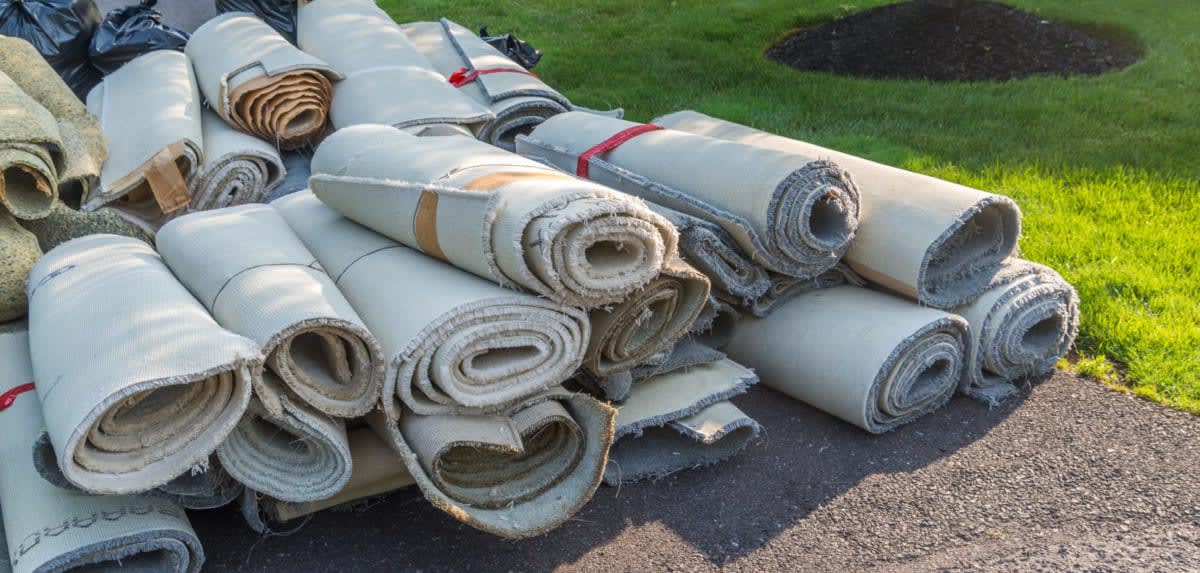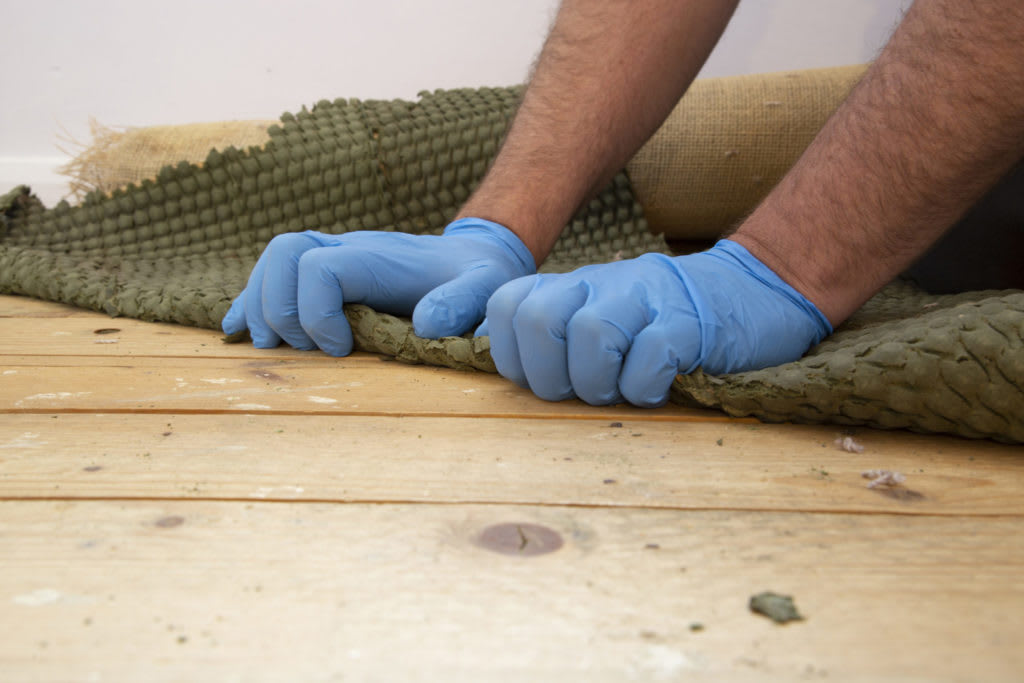- Home
- Education
- Installation Tips and Guides
- How to Remove Carpet and Prep for a New Floor Like a Pro
How to Remove Carpet and Prep for a New Floor Like a Pro

Solid surface flooring is more popular than ever, offering many choices that are beautiful, durable, and easy to maintain. Whether you choose luxury vinyl plank, laminate, or the new incredibly tough Duravana Hybrid Resilient flooring, these products offer affordable, healthier alternatives to carpet which can often hide a host of dirt, dust and allergens.
However, for consumers interested in making the switch from carpet, removing the old carpet can be challenging and sometimes reveals problems that must be addressed before the new floor can be installed. Here’s how to handle the most common discoveries and prep for your new floor like a pro.
Removing the Old Carpet

Carpet is heavy to handle and good carpet installations have few, or no seams. When you're removing carpet, there’s no sense in trying to keep it in one piece. Instead, grab a sharp utility knife and cut the carpet into strips no longer than three feet wide and eight feet long. Roll each section and tie it together with a sturdy string for easy disposal.
Dust, Dirt and Allergens

Carpet can make a pretty good filter to trap a wide range of dust, dirt and allergens. Dust mites find it especially welcoming, which can cause significant allergic reactions. If you’re not prepared, tearing up carpet can send you into a sneezing fit that makes life miserable. Wearing a dust mask can help filter out the dust and dirt released into the air when pulling up carpet, and good ventilation is always a good idea.
Remove Carpet Tackless

Once the carpet is pulled up, you'll find a medieval-looking strip of wood along the perimeter of the room with hundreds of very sharp nails pointing up. This is known as the “tack strip” or sometimes called “tackless,” because it allowed carpet installers to secure the carpet in place.
To remove it, you’ll need a hammer, flat pry-bar and a good set of leather gloves to protect your hands.
Removing [and replacing] Molding

Some DIYers prefer to leave the old baseboard molding in place when switching from carpet to solid surface. Because carpet is thicker, baseboards can have a pretty big gap under them that’s difficult to hide. It’s best to simply remove the baseboard and reinstall it after your floor is installed.
When you remove baseboard molding, you may find portions have been adhered to the wall, and pulling them off could tear the drywall. To avoid this, first run a utility knife between the wall and the molding to break that seal, and then work the molding loose using a flat pry-bar. Also, be on the lookout for any alarm wires that may have been hidden behind molding or even under door saddles.
Fix Soft/Uneven Floors

Hard surface flooring needs to be installed on a secure, flat subfloor. Uneven or soft subfloors can cause the locking joints of floor planks to separate and ruin the floor. Floor leveling compound can help fill in low spots, while high spots can be sanded down if your subfloor is wood or ground down if its concrete. Once you're finished, your subfloor should be flat with no variation greater than 1/8 inch over 6 feet.
Repair Squeaking Floors

A squeaking floor can be one of life’s little annoyances, but it rarely signals a structural problem, and now’s the perfect time to repair it. The actual sound generally comes from one of two sources: loose floor-boards rubbing together, or the nails holding down the floor squeak as they move in and out of their holes.
Fortunately, squeaky floors can be as easy to fix as they are to find. The solution is to secure the subfloor to the floor joists below. As nails can loosen over time, drive screws in front of every nail in the floor, particularly near the seams. Screws never come out, so they're a great solution for eliminating future squeaks.
Go Pro

Removing carpet and preparing for new solid surface flooring is not a complicated job, but it may reveal deeper problems that must be addressed.
If you’re not comfortable taking it on yourself, LL Flooring can arrange for professional independent contractors who can do the job for you.
This article, provided by Tom Kraeutler, originally appeared on The Money Pit website and has been republished by permission.
If you enjoyed this post and want to hear more insights and advice backed by unmatched expertise,
subscribe to The Money Pit Podcast, sponsored by the Flooring Experts at LL Flooring.
Do you have a project removing carpet for new hardwood or hard surface flooring?
We'd love to see photos! Follow us @LLFlooringOfficial — on Facebook or Instagram and use #LLStyle to let us know.


